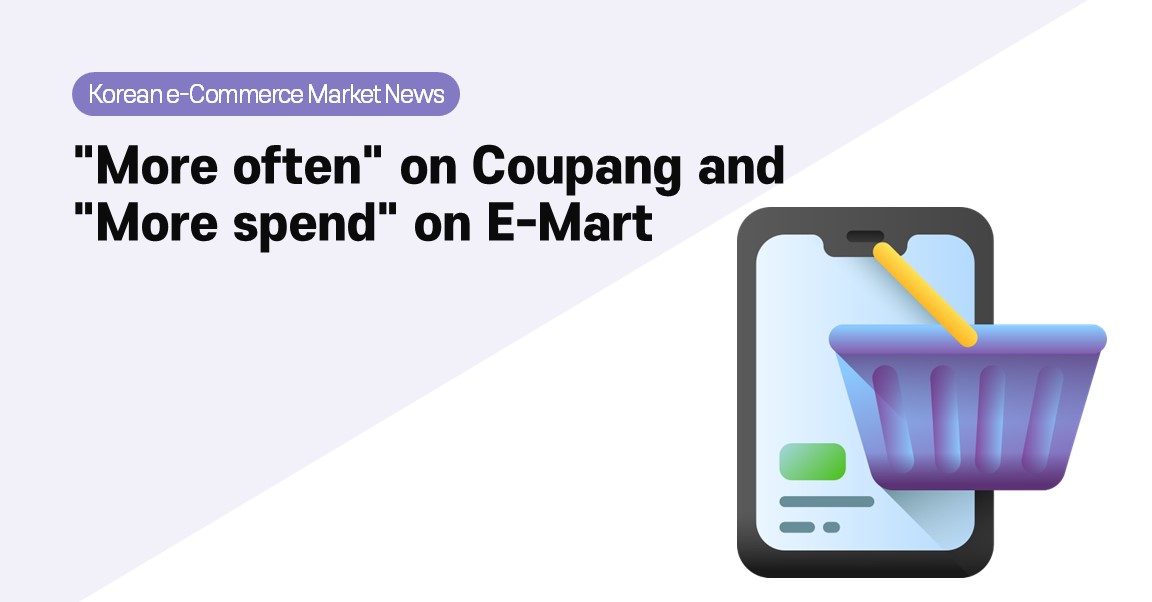
A report comparing and analyzing user consumption patterns of E-Mart and Coupang came out amid fierce competition across online and offline lines in the Korean retail industry. The gist of the report is that consumers buy more often at Coupang and spend more money once at E-Mart.
According to the "Comparative Analysis of E-Mart and Coupang Customers" report published in the Korea Chamber of Commerce and Industry's distribution newsletter, the annual purchase frequency of Coupang and E-Mart customers was 13.2 and 8.6 times, respectively, as of the first quarter of this year. The annual purchase amount was 177,911 won for E-Mart and 255,738 won for Coupang, which was 77,827 won more spent on Coupang. However, the "shopping basket size," which means the amount of purchase per episode, is 20,805 won for E-Mart, about 1,000 won more than Coupang (19,416 won). This means that E-Mart customers spend 1,000 won more on purchases than Coupang. The report was prepared by Kantar World Panel, a global marketing research company, based on a government survey and purchase data of 5,000 households nationwide, and the purchase data was collected by each household uploading related details every day through a smartphone app for a year.
Differences were also evident in the proportion of purchases by each company. In the case of E-Mart, the proportion of food was 58.4%, accounting for an absolute proportion. Including separately classified beverages (14.8%) and dairy products (11.6%), the proportion of foods reached 84.8%, excluding fresh foods. Adding all categories of fresh food, beverages, and dairy products, the proportion of food is 91.7%. If you look closely at food by detailed item, snacks accounted for the highest proportion of purchases with 10.4%, followed by meat processing and fish processing with 8.2%, frozen foods with 8%, noodles with 7.9%, and sauces and seasonings with 6.2%. The proportion of non-food personal goods (9.4%) and household goods (5.9%) was about 15%.
On the other hand, Coupang showed a contrast, with 44.6% of non-foods such as personal goods (30.9%) and household goods (13.7%) accounting for a large proportion. Looking at the proportion of each detailed item in personal products, basic cosmetics were the highest at 10.7%, followed by hair care at 5%, body care at 4.8%, oral care at 3.3%, and baby diapers at 2.7%. Breaking down purchases in the food sector, fresh food accounted for 21.8% and non-fresh food 27.5% of purchases in the fresh sector compared to E-Mart, indicating that consumers still prefer offline channels in primary products where leading is important. The report also noted that E-Mart has relatively high preferences in independent and adult households and Coupang has relatively high preferences in households with children.

